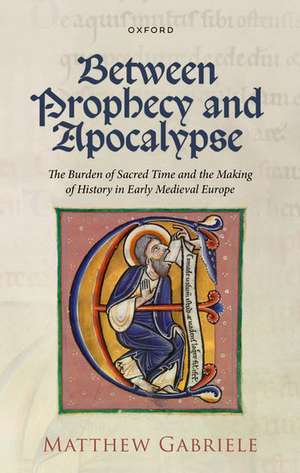Between Prophecy and Apocalypse: The Burden of Sacred Time and the Making of History in Early Medieval Europe
Matthew Gabrieleen Limba Engleză Hardback – 21 mar 2024
Preț: 305.57 lei
Nou
Puncte Express: 458
Preț estimativ în valută:
58.48€ • 60.83$ • 48.28£
58.48€ • 60.83$ • 48.28£
Carte disponibilă
Livrare economică 24 martie-07 aprilie
Livrare express 08-14 martie pentru 28.31 lei
Preluare comenzi: 021 569.72.76
Specificații
ISBN-13: 9780199642557
ISBN-10: 0199642559
Pagini: 160
Ilustrații: 5 illustrations
Dimensiuni: 145 x 223 x 15 mm
Greutate: 0.34 kg
Editura: OUP OXFORD
Colecția OUP Oxford
Locul publicării:Oxford, United Kingdom
ISBN-10: 0199642559
Pagini: 160
Ilustrații: 5 illustrations
Dimensiuni: 145 x 223 x 15 mm
Greutate: 0.34 kg
Editura: OUP OXFORD
Colecția OUP Oxford
Locul publicării:Oxford, United Kingdom
Notă biografică
Matthew Gabriele is a professor of medieval studies at Virginia Tech. He has also been a visiting fellow at Westfälische Wilhelms Üniversität-Münster as well as at the University of St. Andrews, UK. He has published widely (for both academic and wider audiences) on religion, violence, nostalgia, and apocalypse, whether manifested in the European Middle Ages or modern world. Most recently, he co-authored with David M. Perry, The Bright Ages: A New History of Medieval Europe and is working with Perry on Oathbreakers: The Carolingian Civil War and the Collapse of an Empire in the Middle Ages.
